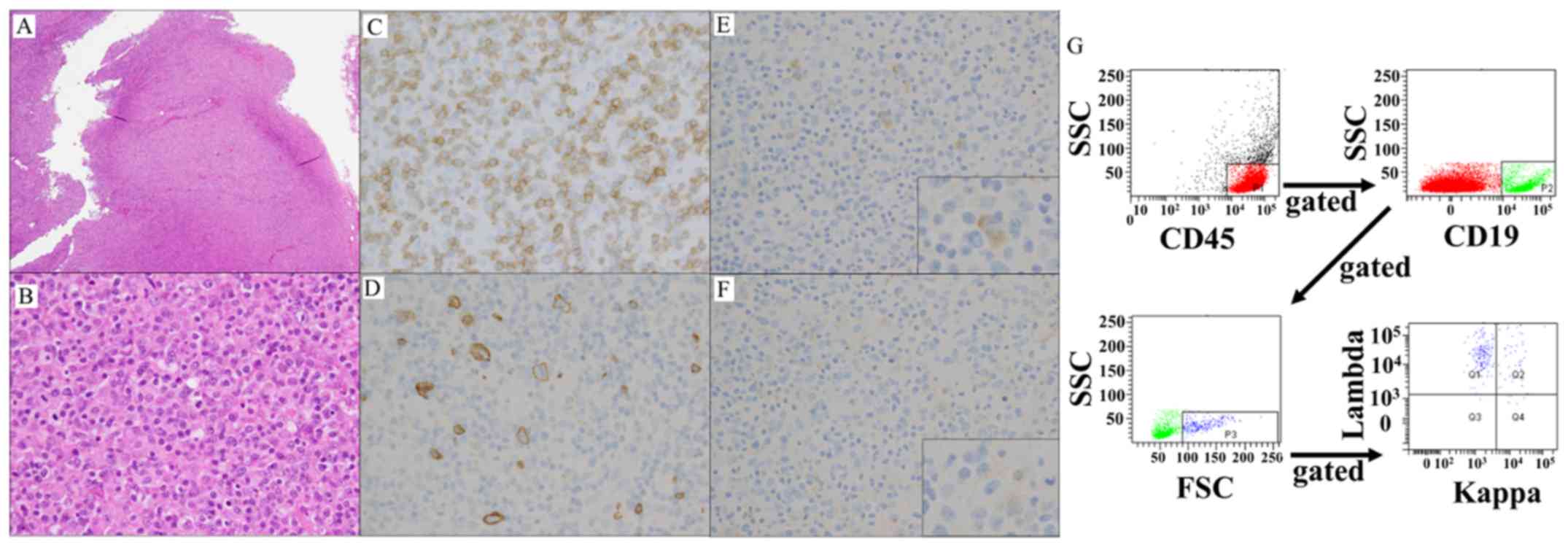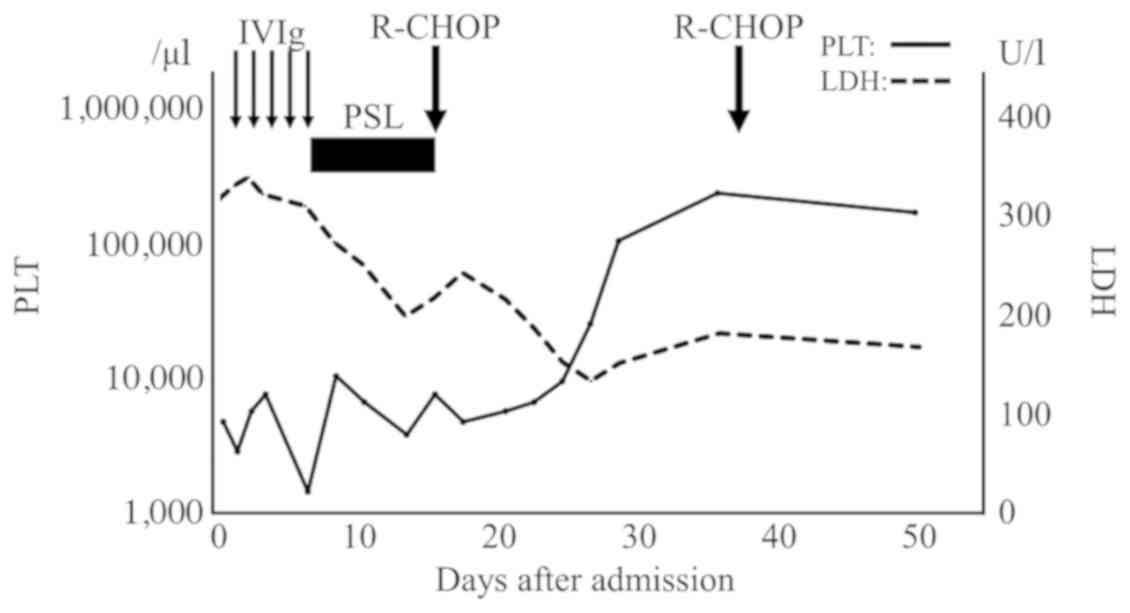Substantial improvement in immune thrombocytopenic purpura associated with T-cell/histiocyte-rich B-cell lymphoma treated with chemotherapy: A case report
- Authors:
- Published online on: February 27, 2019 https://doi.org/10.3892/mco.2019.1816
- Pages: 441-445
Metrics: Total
Views: 0 (Spandidos Publications: | PMC Statistics: )
Total PDF Downloads: 0 (Spandidos Publications: | PMC Statistics: )
Abstract
Immune thrombocytopenic purpura (ITP) is characterized by antibody and immune platelet destruction, occasionally leading to life-threatening hemorrhage. ITP is a frequent complication of chronic lymphoid leukemia, but is rarely associated with diffuse large B-cell lymphoma (DLBCL). We herein describe a case of ITP associated with T-cell/histiocyte-rich B-cell lymphoma (T/HRBCL), which is a rare variant of DLBCL. A 54-year-old man presented with fever, multiple lymphadenopathies, petechial purpura and intraoral mucosal hemorrhage. Laboratory data revealed thrombocytopenia, normal white blood cell count, mild anemia, no active viral infections, and no autoimmune antibodies. Multiple lymphadenopathies were observed on computed tomography. A bone marrow biopsy revealed minor hypercellularity with increased number of megakaryocytes; however, there were no pathological cells or phagocytic cells. The patient was diagnosed with ITP; concurrently, he was also diagnosed with T/HRBCL via lymph node biopsy, and was treated accordingly with a chemotherapeutic regimen comprising rituximab, cyclophosphamide, doxorubicin, vincristine and prednisolone. Prompt reduction in the size of the superficial lymph nodes and an increase of the platelet count were observed simultaneously. To the best of our knowledge, this is the first report of T/HRBCL complicated by ITP. The findings strongly suggest a causative association between ITP and T/HRBCL.












